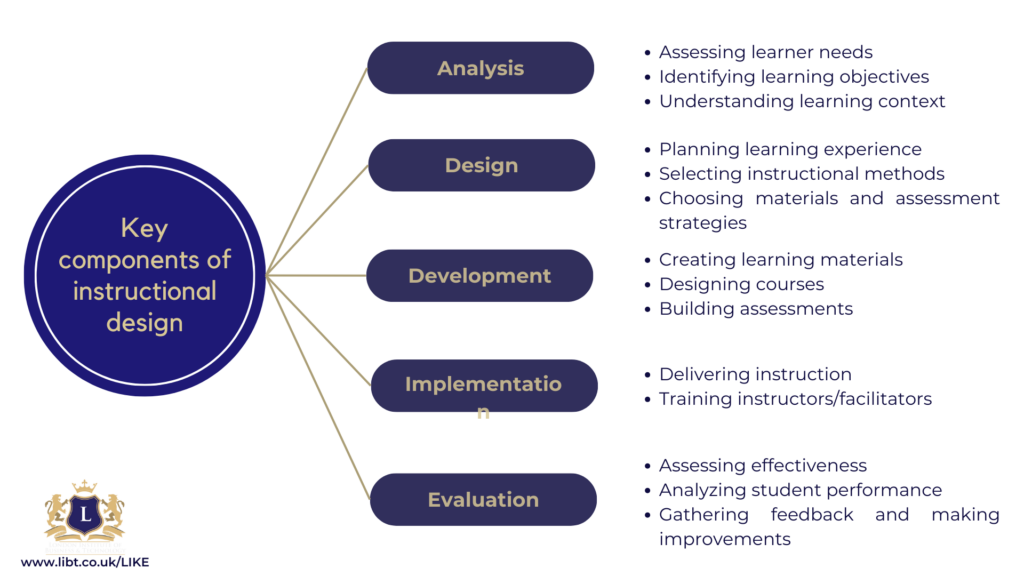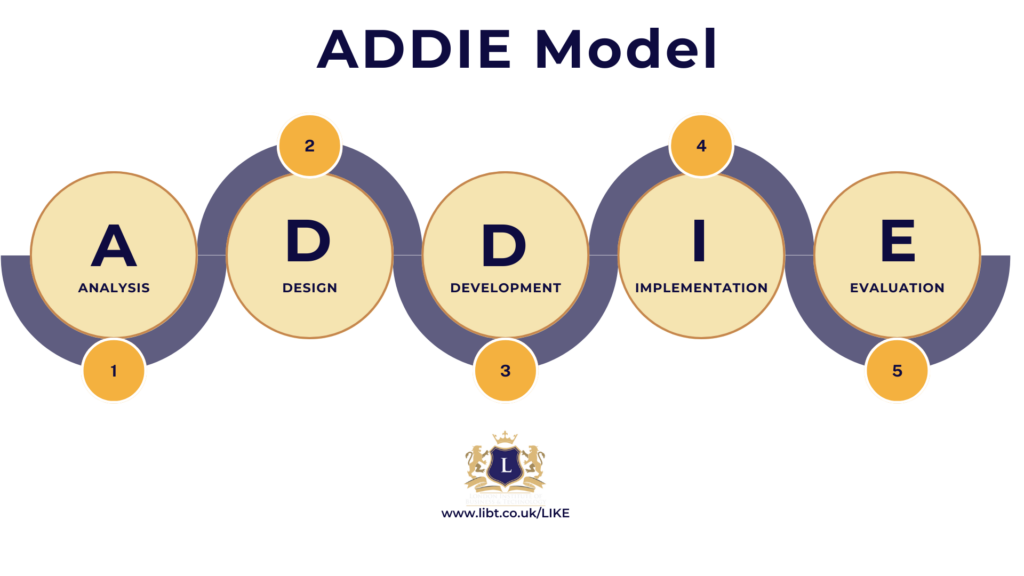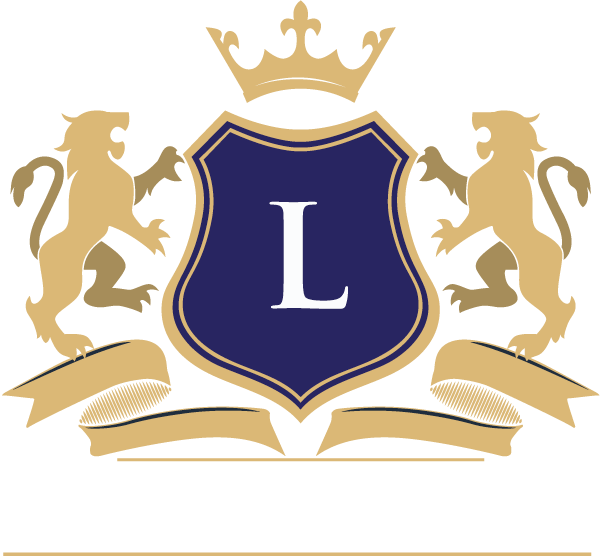A Glimpse into the Current Landscape
Before we discuss how an educational institute or teacher, curriculum designer, module developer can reimagine Instructional Design, it’s vital to understand the current landscape of instructional design. According to recent data, the e-learning market is projected to reach £315 billion by 2025 (source), showcasing the enormous potential in reimagined instructional design strategies. The aim of The LIKE Centre in LIBT is to stand at the forefront of this transformation, spearheading innovative approaches in education. To do so, here is what we can incorporate in our education system to achieve such a goal.
What is Instructional Design?
Instructional Design, often abbreviated as ID, is a systematic process of creating effective and efficient instructional materials and learning experiences. It is a structured approach used by educators, curriculum designers, and trainers to develop and deliver educational content. The primary goal of instructional design is to facilitate learning and enhance the overall learning experience for students or learners. Key components of instructional design include:

What does Reimagining Instructional Design mean?
Reimagining instructional design means taking a fresh and innovative approach to the traditional process. It involves adopting new methodologies, technologies, and pedagogical strategies to enhance the learning experience.
How do we reimagine Instructional Design?
A data-driven approach
Traditionally, instructional design relied heavily on a one-size-fits-all model, where educators and course designers followed predetermined content and teaching methods. However, the digital age has ushered in a new era of education where data plays a pivotal role in tailoring learning experiences to individual needs. At its core, a data-driven approach in instructional design involves the collection, analysis, and application of data to make informed decisions about curriculum, teaching methods, and student support. Here’s a closer look at its significance:

Visualising the Future
Considering these, at LIKE Centre we try to take an approach to a data-driven model that is particularly visionary and practical. Consider the following aspects:
- Real-Time Tracking: Imagine a dynamic dashboard that tracks each student’s progress in real-time. This dashboard provides not only an overview of their academic achievements but also insights into their learning behaviors and preferences.
- Personalized Feedback: With this real-time tracking, educators can offer immediate feedback to students. If a learner is struggling with a concept or falling behind, the system can identify this and recommend additional resources or support.
- Adaptive Learning: The data-driven approach allows for the creation of adaptive learning environments. For example, if a student excels in a particular subject, the system can offer advanced materials or challenges to keep them engaged and motivated.
- Resource Allocation: Educators can optimize resource allocation based on student needs. This means allocating more time and attention to areas where students require additional help.
- Evidence-Based Decision-Making: The data collected and visualized through such a dashboard becomes the basis for informed decision-making. Educators can make adjustments to teaching methods, content delivery, and assessment strategies based on this evidence.
1. Bridging Theory and Practice
At the LIKE Centre, leveraging well-established educational theories such as Bloom’s Taxonomy and the ADDIE model is fundamental in crafting bespoke learning solutions attuned to modern learner’s needs. Bloom’s Taxonomy aids in creating a hierarchical structuring of learning objectives, ensuring a thorough understanding and application of knowledge. On the other hand, the ADDIE model provides a systematic instructional design framework, encompassing the stages of Analysis, Design, Development, Implementation, and Evaluation, thereby ensuring a coherent and effective learning experience. These theories serve as the robust foundation upon which innovative instructional strategies are devised. By amalgamating these time-tested theories with contemporary instructional strategies, the LIKE Centre is fostering a conducive environment where theoretical underpinnings seamlessly intertwine with practical applications, thus creating a rich, well-rounded learning experience that is both engaging and effective.

2. Integrating Technology
The crux of the transformative journey lies in the integration of cutting-edge technology within the educational paradigm. An example is harnessing the power of Artificial Intelligence (AI) in content creation paves the way for a personalized and adaptive learning experience, where the content evolves in real-time based on individual learner interactions and performance. Furthermore, the incorporation of Virtual Reality (VR) technology unfolds immersive learning experiences, transporting students beyond the conventional classroom settings into interactive 3D learning environments. These technological integrations are not merely about leveraging new tools; they are about redefining the boundaries of instructional design, making learning more engaging, interactive, and learner-centric. The fusion of technology with education is a testament to the potential of modern technology in amplifying the learning experience, making education more accessible, personalized, and impactful. Through research on how to integrate these technologies, the LIKE Centre aims to orchestrate a modern learning environment where technology acts as a catalyst in enhancing learning outcomes and fostering a culture of continuous innovation in education.
3. Collaborative Learning Spaces
At the core of LIKE’s educational philosophy lies a strong belief in the transformative power of collaboration. We aim to foster interaction, creating a conducive environment where students are encouraged to learn from one another, exchange ideas, and work collectively towards problem-solving. This collaborative milieu nurtures a community of innovation and critical thinking where every interaction is an opportunity for learning, every discussion a pathway to deeper understanding, and every collaborative endeavor a step towards nurturing a community of engaged, insightful, and innovative thinkers. The collaborative learning spaces at LIKE are more than just physical or virtual rooms; they are the crucibles where the seeds of innovative thought are sown, cultivated, and blossomed, promoting a culture where learning is a collective endeavor, and innovation a communal achievement.
4. Tailored Learning Paths
Recognizing the uniqueness of each learner, at LIKE we’re committed to research, develop and tailor learning paths that help LIBT to cater to individual learning styles and preferences. Leveraging the prowess of Artificial Intelligence (AI), LIKE crafts personalized learning journeys that adapt to the evolving needs and understanding of each student. The instructional designs are intricately tailored, ensuring that the learning experience resonates with each individual’s pace, preference, and potential. This personalized approach transcends the one-size-fits-all model, ushering in a new era of education that is as unique as each learner. The harmonization of AI with instructional design at LIKE unveils a realm where each learner is valued, each learning style is recognized, and each educational journey is personalized. Through tailored learning paths, LIKE endeavors to ensure that education is not just a process but a personalized journey of exploration, understanding, and growth.
A Peek into Our Initiatives
LIKE is not just a centre; it is a movement. A movement to foster innovation, encourage knowledge enhancement, and build a community of lifelong learners. Let’s take a closer look at some of the initiatives spearheaded by the LIBT and the LIKE Centre.
- Micro-Learning Modules: Short, focused modules that allow for in-depth exploration of specific topics (Certification Courses)
- Blended Learning is where the traditional classroom learning intersects with the digital realm, cultivating a rich, versatile learning environment (Diploma & Degree Programmes)
- The cornerstone of Self-Paced Learning lies in honoring the unique learning pace of each individual.
Conclusion
The LIKE Centre at LIBT stands as a vanguard in the evolving landscape of instructional design, exemplifying how traditional teaching methodologies can be synergistically blended with modern technology to cater to the eclectic learning needs of contemporary students. The center showcases a mélange of innovative initiatives—ranging from micro-learning modules and blended learning strategies to the integration of cutting-edge technologies like AI —each designed to foster a more personalized, engaging, and effective learning experience. As we continue on this path of innovative educational exploration, a ponderous query looms: How will the continuous integration of emerging technologies further morph the instructional design landscape, and what uncharted territories of educational innovation remain yet to be explored?







Leave a Reply
You must be logged in to post a comment.